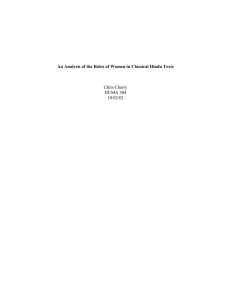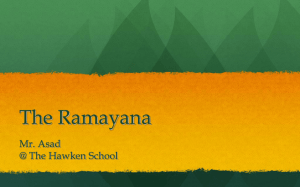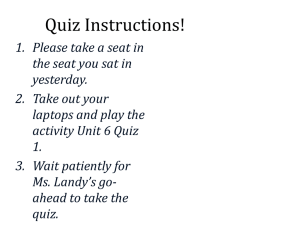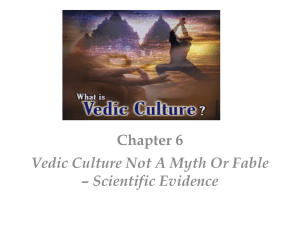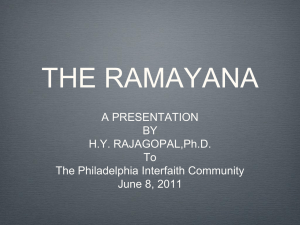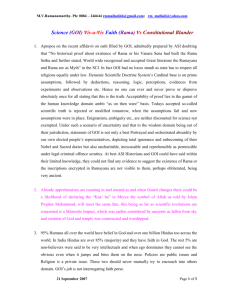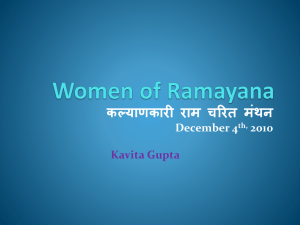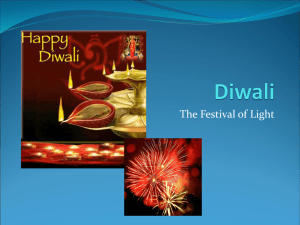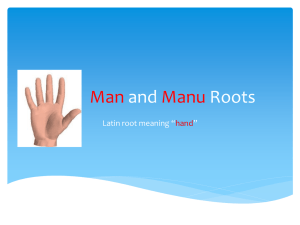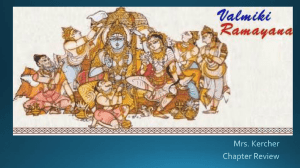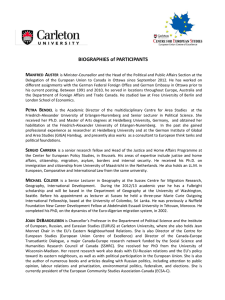Vedic_MBM
advertisement
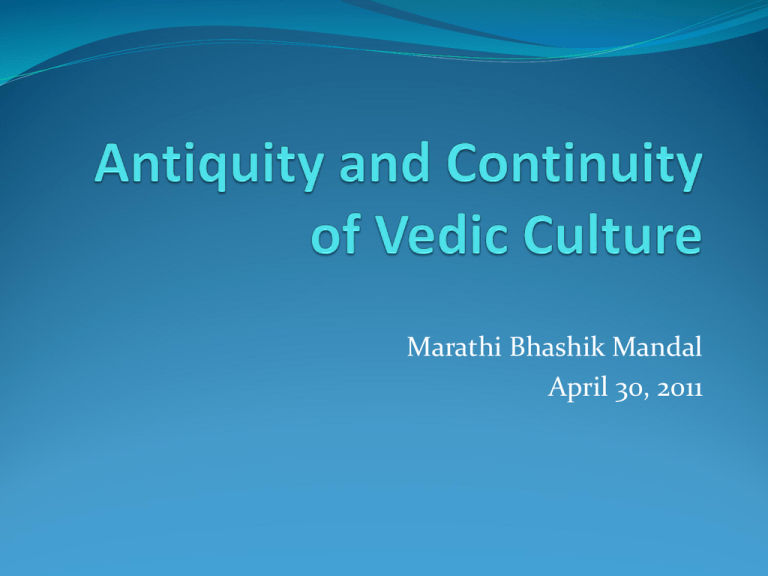
Marathi Bhashik Mandal
April 30, 2011
Debt
Sources of Compilation
Vedic Literature
Puraan, Ramayan, Mahabharat
Zend Avesta, Greek Sources
Astromical, Philological, Archaelogical, Literary
Genetics
RgVed – Oldest Book
Belongs to All, irrespective of class, colour or creed
Astronomical References
Taiteriya Brahman (3:1:15), where Brushaspati (Jupiter) crossed
the Pushya constellation, gives a date of 4650 B.C.
Aiteriya Brahmana refers to 6000 B.C.
From the calculation of the vernal equinox cycle, the Taiteriya
Samhita provides dates that reach as far as 22000 B.C (Ref:
Vartak, Tilak).
The life sized head has a hair style which the Vedas describe as
being unique to Vasishtha... Carbon 14 tests indicate that it was
cast around 3700 B.C., with an error in either direction of upto
800 years .. an age also confirmed by independent metallurgical
tests" (J. of Indo-European Studies, v.18, 1990, p.425-46).
The Homeland
(Manu)
Early Kings
Manu the son of Vivasvan, was the 15th decendant of
Barhi.
Manu's decendants are called Manav.
During his rule a terrible flood broke out. It is believed
that a shark (First incarnation of Vishnu) helped Manu
survive the floods.
Swayambhuva Manu
Kaliyug : 3102 B.C (Varahamihira, Kalhana, Arya Bhatta,
Vruddha Garga, Puraan)
ChaturYuga Cycle : 12000 human years (4800 years Kruta,
3600 Treta, 2400 Dwapar, 1200 Kali)
Vaivasta Manu: 13902 B.C (10,800 years before Kali)
Swayambhuva Manu: 29000 B.C (71 Divya Years before) 1
Divya Year = 360 human years)
The Matsya Puraan (129-76, 77) confirms
B.G.Tilak in his "Orion" has calculated 29101 B.C., using
astronomical data
“Bhaarat” Origins
• King Nahush caretaker of Indra's Kingdom
• King Yayati's thirst to remain young
• Yayati rewards his youngest son Puru
• Shakuntala is born to Apsara Menakaa
• Prince Dushyant secretly marries Shakuntala.
• Shakuntala looses the ring, that proves her to
be Dushyant's wife.
• Ring is found. Return of Shakuntala.
• King Bharat. After whom the country is
called Bhaarat.
Cradle of Civilization
Where? When? Spread?
Harappan figurines depict a mother goddess often enough, and again
the Vedic hymns implore various aspects of the Mother: Sarasvati,
Ushas, Ila, Aditi, Prithvi, Bharati… the cult of a mother goddess is
attested as early as 8000 or 9000 BCE!
(Source: Page 234 of The Lost River: On the Trail of the Sarasvati, by
Michel Danino, Penguin Books, 2010).
Saraswati-Sindhu Culture
•300 cities & many supporting villages covered
1,500,000 sq. km. Bigger than Western Europe.
•Most cities were shaped as parallelograms.
•Mohenjo-Daro and Harappa had populations
of 100,000.
•Cities had giant reservoirs for water.
•Underground drainage system.
•2 or 3 storied houses, built with bricks of
uniform size.
•Weights were standardized.
•The entire empire used same script.
•Marine culture. A huge dock in Lothal.
•They exported goods to Egypt (Nile) and
Sumer (Iraq, Tigris-Euphrates).
Hindu Swayamsevak Sangh
River System
•Sapta-Sindhu Region
•Saraswati changes course 4
times, finally disappears
Saraswati
Hindu Swayamsevak Sangh
RgVedic Places
40,000 year old Painting
•White silica
sandstone rock
shelter
•Bhimbetka Caves
•Notice the horse
with rider
Outbound Migration
Commerce (miners, sailors, merchants)
Natural Movement
War
Famine, Flood
Early Migrations
(War of Ten Kings)
Early Migration – The first Wave
The First Great Migration: Druhyus spread out northwards from
northwestern Punjab and Afghanistan into Central Asia (and
beyond)
The Second Great Migration: The Anus spread out westwards from
the Punjab into Afghanistan
BhRgus (Phryges, Thraco-Phrygians), Alinas (Hellenes, Greeks) and Simyus
(Sirmios, Illyrians or Albanians) migrating westwards from Afghanistan as far as
Anatolia and southeastern Europe
Kashyapa Rishi is associated with northern regions like Kashmir,
that was originally called Kashyapa Mira or Kashyapa’s lake … also
the Caspian Sea appears to be named after him
Uttara Kurus, described as a spiritual paradise north of the
Himalayas (perhaps Siberia or Shiva-riya)
Daasharadnya Yuddha (War of Ten Kings)
Iranian (Abhivarta) Chayamana – King of Paarthava
people
Bhaaradwaj Rishi, Commander Divodaasa (Father
Daivavatata, Son Sudas)
Sudas (Vishmamitra, Vasishtha, Agastya)
Puru, Yadu, Turvasa Anu, Druhyu, Alina, Paktha ('Pathan'; 'Pashthun'), Bhalinas, Siva,
Visanin, Simyu, Vaikarna
Sindhu River – Migration to East and West
Early Migration
Anatolian (Hittite) was the first branch to leave the homeland:
“The Anatolian languages, of which Hittite is the best known …
they apparently represent an earlier stage of Indo-European, and
are regarded by many as the first group to break away from the
proto-language.
Four branches, Indic, Iranian, Hellenic (Greek) and Thraco-
Phrygian (Armenian) were the last branches remaining behind in
the original homeland after the other branches had dispersed.
European Celts clearly practiced, and a few still do, more orthodox
Vedic type religions, with similar traditions of chanting, rituals,
deity worship, mantra and meditation.
Migration to West (Tigris, Euphrates)
Roosam and Siberia (Shiva-Riya)
Paarthava and Bharata
Hindu Kush Region (Nagas)
Zarathushtra
Vedic Iranian (Dasyu)
Zarathustra, a contemporary of king Vishtaspa
(Sage Kaksivan speaks of one Istasva) lived around
7100 B.C.
Greeks Herodotus / Strabo: Caspian Sea and
Caucasus mountains are named from Sage Kaspios
(Sage Kashyapa of the Rg Veda)
Migration to the West
Iran-Iraq
Charles Vallency quotes Sir William Jones as saying "It
has been proved by clear evidence and plain reasoning
that a powerful monarchy was established in Iran, long
before the Assyrian or Pishdadi government; that it was
in truth a Hindu monarchy ... that is subsisted many
centuries.." (Collectania De Rebus Hibernicus, p.465).
Pococke observes, "that a system of Hinduism pervaded
the whole Babylonian and Assyrian empires"
Migration Routes (Pani, Kuvera)
Migration to the West
Europe / Greece
Renfrew allows a date as early as 6000 B.C. for the migration of
Vedic aryans into Europe ("The Origins of Indo- European
Languages", Sc.Amer, Oct, 1989).
Egypt
Prof. Brugsch Bey writes in "History of Egypt" that "We have a right
to more than suspect that India, eight thousand years ago, sent a
colony of emigrants who carried their arts and high civilization
into what is now known to us as Egypt. The Egyptians came,
according to their records, from a mysterious land (now known to
lie on the shores of the Indian ocean) ... led by Amen, Hor, Hathor
(Brahma, Hari, Rudra)..."
Migration to the West
Greece
Pococke writes in "India in Greece" (quoted in Age of Buddha, by
K.Venkatachalam, p.75), "The early civilization, the early arts, the
indubitably early literature of India are equally the civilization of,
the arts, and literature of Egypt and of Greece; for geographical
references conjoined to historical facts and religious practices, now
prove beyond all dispute than the latter countries are the colonies
of the former".
The Greeks (and Egyptians) derived their cosmogony from the
Hindus is apparent from their respective literature (Deshpandey,
"Bharat: As seen and known by foreigners").
Vedic Greek Deities
Greek
Sanskrit
Meaning
Zeus
dyu, Dyaus
shine, sky, day; sky god
Hera
soar
bright sky
Uranus
var
conceal, cover
Daphne
Dahana
dawn
Ixion
Akshanah
one bound to a wheel
Paris
Panis
night demons
Athene
ahana
the light of daybreak
Prometheus
Pramanthas
Stick used to kindle Fire(Agni)
Vedics in Italy
An Vedic emblem at in the Etruscan Museum at the
Vatican in Rome. Encyclopedia Britannica mentions
under the headings "Etruria" and "Etruscan" that
between the 2nd and 7th centuries BC
Vedics in Italy
Roman consul wearing a “tilak” ... (Published in
"History of Rome" page 237 by Smith and in "Long
Missing Links" by Aiyangar.)
Vedics in Italy
What appear to be Ramayanic paintings … Rama, Sita,
Lakshman and Lava, Kusha with a horse related to
(Ashwamedha)
Gypsies of Europe
Linguistic and genetic analysis
has charted the Gypsy migration
from India to Europe through the
Hindu Kush, along Persia and the
southern shoreline of the Caspian
Sea, through the southern
Caucasus (Armenia)
And westwards to Anatolia and
Byzantium.
10 million live in Europe
Druids - Druhyus in Europe (Hari-yupia)
South-Central America
(Paatala, Kingdom of Bali)
Mayans, Peruvians, Aztecs, Incas
Nagas, Kubera, Shiva, Sun Worship
Rama is represented as a descendant from the sun, as the husband of
Sita, and the son of a princess named Causelya. It is very remarkable that
Peruvians, whose Incas boasted of the same descent, styled their
greatest festival Rama-Sitva; whence we may take it that South America
was peopled by the same race who imported into the farthest of parts of
Asia the rites and the fabulous history of Rama.
(Asiatic Researches Volume I. p. 426)
"a proper examination of these monuments would disclose the fact that in
their interior as well as their exterior form and obvious purposes, these
buildings (temples in Palanque, Mexico) correspond with great exactness
to those of Hindustan..."
(Ephraim George Squier (1821-1888) in Peru; Incidents of Travel and Exploration in the
Land of the Incas and The Serpent Symbol, and the Worship of the Reciprocal Principles
of Nature in America.
Route to South America (“Paatal”)
The ancient sea routes from India to South America following the ocean current.
(source: The Indians And The Amerindians - By Dr. B. Chakravarti p. 82).
Quichua and Sanskrit
Akapana (cloudscolored by sun)
chani (price)
chinkat (jaguar)
Chirau (resplendent)
huakra (horn)
kakarpa (tent)
mita (time)
muti (pounded corn)
nana (sister)
pakkni (to break)
paksa (the moon)
pisi (small)
pitata (bedroom)
simpa (cord)
soro (spiritual liqour)
sokta (six)
aka (painting)
jani (produce)
sinha (lion)
sura (to shine), chirayu (long lasting)
vakra (curved)
k'arpara (parasol)
mita (step passage of time)
mut (to pound)
nanda (sister)
pike (to break)
paksa (the full moon)
pis (to break)
pita (house, cottage)
samb (to tie)
sura (spiritual liquor)
shaasya (six)
(source: The Ayar-Incas - By Miles Poindexter p. 211-215).
Rituals, Poetry, Education
“From child-birth to cremation and Sati the Aztecs (“Astiks”) observed
almost all Hindu rituals including the Gurukula system of education
followed in India. The Incas of Peru with Ayar Brahman ancestry observed
the sacred thread ceremony, the ear-piercing ceremony all other Hindu
rituals and rigidly observed the caste systems of India.
It is not without reason that the Spanish author Lopez says in his book Le
Races Aryans de Peru : “”Every page of Peruvian poetry bears the imprint
of Ramayana and Mahabharata.”
Ages of Glory
(Ramayan - Mahabharat Era)
5500 B.C
Ramayana
Evidence
Tradition informs that Mahabharata occurred at the
end of Dwaapar Yuga and Ramayana at the end of Treta
Yuga.
Some clues from Sumerian clay tablets, Isin and Kish
chronicles which approximate the date of the first king
(Ukhu == Iksh-vaku) of the first dynasty of Sumeria to
be 8350 B.C.
Shree Rama was 75th in Ikshwaku lineage and that 60
generations passed between Shree Rama and Shree
Krishna. … (Shrimad Bhagvat) that Ramayanic date
therefore falls at about 5300 B.C.
Rama Setu
•Fictitious?
•30 km long –
Ramaeshwar and
Srilanka
Ramayana Abroad
Nepal, Sri Lanka, South Easy Asia
Japan and China from Jataka
Cold Siberia
Mayans of Mexico, Poetry Peru and Vishnu Temple
in Uruguay
“work of the Nazca people for navigational aid”.
According to local legend, this carved trident
represents the lightning rod of the god Viracocha,
who was worshipped throughout South America.
Ramayana in South East Asia
Prambanan was built in Java,
Indonesia by Rakai Pikatan,
king of the Second Mataram
Dynasty (late 9th century AD).
Lions flee as Ravana
uproots the mountain
where Shiva sits with his
consort Parvati. (Temple
relief
Angkor, Cambodia )
Ramayana in South East Asia
Rama, Sita and Lakshmana enter the forest
( Golden Gong Puppet Theatre (Yok the pwe,
marionettes)
Yangon, Myanmar
Ravana kidnaps Sita.
Lakhon bassac (folk opera), DaoTan
Drama Theatre
Binh Dinh, Vietnam
Jatayu tries to rescue Sita. Detail of
mural painting (late 18th C) at Wat
Phra Si Ratana Satsadaram (Wat Phra
Kaeo) Temple
Bangkok, Thailand
Ramayana in South East Asia
Hanuman delivers Rama's ring to
Sita. Khon (court dance drama),
Natyasala Dance School
Wiangchan, Laos
The monkeys build a causeway of
rocks to Ravana's kingdom. Hanuman
dives below the sea and finds
Suvarnamatsya, Wat That Luang
Ratsamahawihan temple,
Luang Phabang, Laos.
Mahabharat
3138 B.C.
Evidence
Archaeological evidence (Dwaraka, River Saraswati), inscriptions
found at various places (Aihole, Belgaum, Nidhanpur)
Greek records (Megasthenes), etc. provide interesting clues to the
dateline of the Mahabharat.
On one of the excavations obtained from the Egyptian Pyramid,
dated to 3000 B.C, is found engraved a verse from the Bhagavad
Geeta "vasanvsi jeernani yatha vihaya, navani ghrunnati naro
parani" (Nava Bharat Times, 18-4-67).
A tablet found in the Mohenjodaro sites depicts Lord Krishna and
is dated to be 2600 B.C (Mackay's report, Part 1)
According to B.B. Lal, horse bones, vestiges of the Ashwamedh,
have been discovered at Hastinapur.
Immense Destruction
Krishna leaves his earthly abode
Kaliyug descends
Dwaraka submerged, Saraswati disappears
Yadav peoples disperse to Europe
1500 years pass
Heavy Migration occurs (Maya in Mexico, Bheema in Siberia)
Bhagavad Geeta is sung
Pali and Brahmi scripts are developed
Yadus in the Middle East
The Yadavas were progressive, dynamic, and energetic people. They
opened new vistas in every walk of life-music, dance, fine arts,
archery, government, wrestling, breeding, scaling high peaks,
inventing new device, discovering new ideologies, philosophies, etc.
The contribution of these people to India in particular, and the world in
general, immense...'
(Yadavas Throughout the Ages , Vol. II, pp. 7--8.)
Medieval Times
(Post Mahabharat Era)
1864 B.C.
Mahaveer Jain
Born near Pataliputra (Bihar)
Jaina tradition holds that Bhagawan
Mahaveer (Vardhamaan) left this world 15
years after the death of Bhagawan Buddha
(1807 B.C.), i.e., in 1792 B.C., and since
Mahaveer lived for a span of 72 years, he
must have been born in 1864 B.C.
He preached that right faith (samyak-
darshana), right knowledge (samyak-jnana),
and right conduct (samyak-charitra) together
will help attain the liberation of one's self.
Nonviolence (Ahimsa), Truthfulness (Satya),
Non-stealing (Asteya), Chastity
(Brahmacharya), Non-attachment
(Aparigraha)
Gautam Buddha
Siddhartha to Shuddhodana the king of
Kapilavastu (Nepal). Married to Yashodhara, who
soon gave birth to a son who they called Rahul.
Gautam Siddharta was 23rd in the Ikshwaku
lineage
Contemporary of Kshemajita, Bindusar and
Ajatashatru, the 31st-33rd kings of the Shishunaga
dynasty
Coronation of Ajatashatru tookplace, that is in
1814 B.C.
Astronomical calculations suggest Gautam
Siddharta to be 2259 years after the Bharata War
(3138 B.C.). which turns out to be 1880 B.C.
Aarya-ashtangamarga
(Eight-fold path)
Born in 1887 B.C., Renunciation in 1858 B.C.,
Penance during 1858-52 B.C and Death in 1807
B.C.
Chandragupta Maurya
1534 B.C.
•“Magadha” King
•Greek chronicles silent on the
names of Chanakya, Bindusar (his
son) and even Ashoka (his
grandson)
•Shishunaga dynasty ruled for 360
years, beginning from 1994 B.C.
•Nanda dynasty was 100 years
(Mahapadma Nanda)
•During this time dams were
constructed on rivers for water
storage and irrigation. Rainfall
was measured. Silver coins were
issued by the rulers to facilitate
trade. (Earliest known coin is a
coin issued by Ajatshatru.)
Aadi Shankaracharya
509 B.C.
•Kaladi, Kerala (Sivaguru, Aaryamba)
•Sri Govinda Bagawathpathar (Guru)
•Established 4 “Maths” (pilgrimage site
and seat of learning )
•Jotirmath, Badrinath, Uttar Pradesh
•Govardhana Matha, Puri, Orrisa
•Sringeri Peetham, Shringeri,
Karnatak,
•Dwaraka Pitha, Dwaraka, Gujarat)
•Upholding the underlying unity of the
holy land of Bharat.
•Lived for 32 years (Quem di diligunt,
adolescens moratur -- Whom the gods
love, die young)
Alexander meets Puru
King Porus
Alexander Defeated
Returns to the West
Gupta Dynasty
Gupta Dynasty
•Xandramas, Sandrocotus,
Sandracyptus
•2811 years after the Mahabharata
War, i.e., corresponding to 328 B.C.
•Sandrokotus of the Greeks, the
political and social conditions in India
at that time, match to those of in the
era Chandragupta Gupta (not Maurya)
•"Golden Age" in the history of India
•Art and architecture, polity and
politics, wealth and wisdom
flourished side by side.
Cholas in South East Asia
Outbound Arya Migration
Myth of the Aryan Invasion
(1500 B.C)
Cause a split between
North and South, different
castes, aboriginals
Justification to rule Bharat
Arya means noble, with
good qualities (Rama,
Krishna, Buddha,
Chanakya)
Conintuous History and Spread
Vedic culture had reached a state of supreme high
idealism
Arya people wanted to propagate and share with rest of
the world
From the original Sapta-Sindhu homeland, and later,
from the regions of Caspian Sea, the Vedics appear to
have migrated across the globe
“Dravid” were the early offshoots of the Vedic people
through Sage Agastya
Common history of humanity
Commonality and affinity of the most ancient
languages with Sanskrit
Timelines
Swayambhuva Manu 29,000 B.C.
Veda (early stages) 23,720 B.C.
Samhita (Taitiriya) 22,000 B.C.
Manu Chakshushu 17,500 B.C.
King Pruthu 16,050 B.C.
Manu Vaivasvata 14,000 B.C.
Indra-Skanda dialogue (Mahabharat) 13,000 B.C.
Glaciation period 8,000 B.C.
Dasharadnya War 7,000 B.C.
Ramayana 5,500 B.C.
Orion period 4,000 B.C.
Timelines Continued
Greeks separate 4,000 B.C.
Rajatarangini begins 3,450 B.C.
Gonanda-I of Kashmir 3,238 B.C.
Mahabharata 3,138 B.C.
Veda (last stages) 3,100 B.C.
Saptarsi era begins 3,076 B.C.
Saraswati-Sindhu Culture 3,000 B.C.
Gautam Siddharta born 1,887 B.C.
Gautam Siddharta Nirvana 1,807 B.C.
Mahaveer Jain born 1,862 B.C.
Timelines Continued
Chandragupta Maurya 1,534 B.C.
Ashoka Maurya 1,482 B.C.
Ashoka Gonanda 1,448 B.C. Kanishka 1,294 B.C.
Kumarila Bhatta 557 B.C.
Vruddha Garga 550 B.C.
Aadi Shankaracharya born 509 B.C.
Harsha Vikramaditya 457 B.C.
Shatkarani Gautamiputra 433 B.C. Chandragupta Gupta
327 B.C.
Shakari Vikramaditya 57 B.C.
Shalivahan 78 A.D.
Huen-Tsang 625 A.D.
Kalhana (Kashmiri historian) 1,148 A.D
